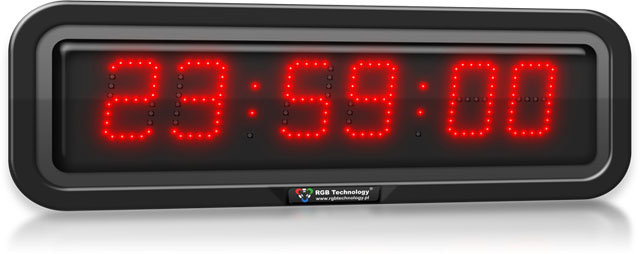
When synchronic time indication is required, the user often has a dilemma, what to choose. Clock networks, operating according to a master clock and client clocks principle, are available on the market. The master clock sets the time for all other devices. However, clock networks have some disadvantages: the master clock cannot be too far from the other electronic clocks; clock networks require connecting the clocks to form a network (attention! long, expensive cables). Such solutions are uneconomical, and the master clock failure "kills" the whole system. If you need to synchronise the clocks in several buildings, plants, or branches, which are several hundred kilometers away, the clock network must be connected through the Internet (it requires a permanent IP number). The voice of reason suggests: radio time synchronisation.
Time may be synchronised by radio in several ways. The first method is the RDS system of radio stations (amateur application - within a regional range). The other method is DCF77 signal, which is transmitted by ground antennas from the town of Mainflingen, about 25 km from Frankfurt on the Main in Germany. The DCF system is not resistant to the interference of mobile phones or of high-voltage lines, the interference around industrial buildings or the interference of computer equipment. DCF77 is less and less significant, and the system itself is considered obsolete. The third method is the GPS system.
 GPS (the Global Positioning System) is a global navigation satellite system. The system was created, and is realised and managed by the United States Department of Defense. Everybody in the world can practically receive the GPS signal. The receivers, manufactured by many firms in the world, are available on the market for reasonable prices. Using the GPS system is not connected with any fees and does not require a subscription.
GPS (the Global Positioning System) is a global navigation satellite system. The system was created, and is realised and managed by the United States Department of Defense. Everybody in the world can practically receive the GPS signal. The receivers, manufactured by many firms in the world, are available on the market for reasonable prices. Using the GPS system is not connected with any fees and does not require a subscription.

Although the GPS system was created for positioning (it means, determining one's position), it can be used for other purposes. In the received GPS signal, the information about the current time and date is encoded. This time is very accurate, because it is set on the basis of atomic standards. It may be only one millionth of a second per month late or fast. Such time accuracy is not required for traditional applications, but you cannot have too much of a good thing...
The displays and electronic clocks, manufactured by RGB Technology, can co-operate with the GPS system. On offer, we have the GPS receivers and antennas, which need no configuration. These devices are of the "set-and-forget" type. The time synchronisation enables self-readjustment to the Daylight Saving Time / the standard time and corrects the slightest clock delay in progress. The electronic clocks equipped with a GPS receiver switch the seconds over at the same time, which is important, for example, at the railway stations, bus stops, etc.














